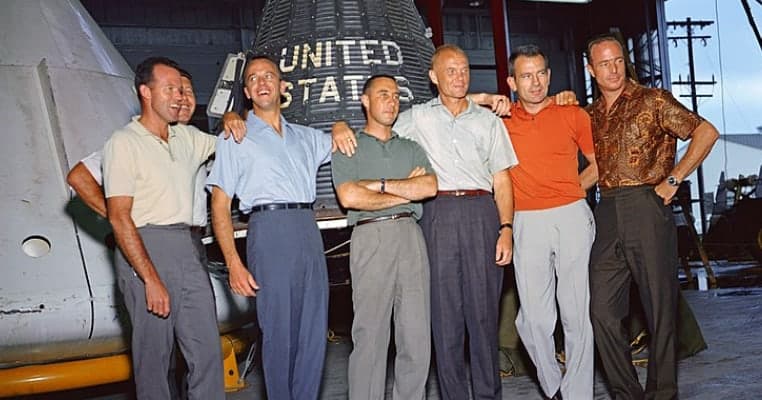America’s space program did not begin in the 1960s, but through the medium of television and the growing discipline of public relations, it took off, as it were, during that decade. Astronauts, especially the first seven, became national heroes and household names. Outer space and space exploration dominated the advertising industry, toys, entertainment, and even food and drink. During the 1960s the manned Mercury and later Gemini missions were presented to the American public as a series of unbridled successes by NASA and the press and television. Unmanned missions received the same applause. The nation watched with bated breath as the missions unfolded, each of them one more step closer to achieving President John F. Kennedy’s goal of landing a man on the moon and returning him safely to earth by the end of the decade.
There were failures, many of them kept from the public, and some of them which occurred during the manned missions were potentially deadly. A fire which killed three astronauts during a test for an early Apollo mission disrupted the program at a time when it was evident that the Soviets were no longer planning a lunar mission, and nearly ended America’s. NASA and the program’s supporters managed to keep the program going, and it was the ultimate success of the moon landing in 1969 which became its crowning achievement, as well as ending the public’s enthusiasm for the space program. Before America’s final (to date) lunar mission in 1972, the public’s enthusiasm had waned and its attention went on to other things.

Here are twenty examples of the successes and failures of America’s space program during the 1960s.

1. America was never really behind the Soviets in the Space Race
It is often presented that the United States was taken aback when the Soviet Union launched its first satellite, Sputnik, and was from that point until sometime in the late 1960s behind the Soviets in the space race. America scrambled to catch up. The image is a false one. The United States had been preparing satellites for orbit for several years, and though its rocketry program was problematic, the contributions of former Nazi rocket experts rapidly brought the Americans to parity with the Soviets. It was the American public who was shocked since it was for the most part unaware of American activity in the exploration of space. That shock was readily exploited by politicians and the Space Race was underway by 1958. NASA funding grew exponentially, as the responsibility for space exploration was shifted to it from the Air Force.
The Soviets too were the first to put a manned vehicle in space, in April 1962, but the United States responded with a manned mission, Alan Shepard in a Mercury spacecraft, only three weeks later. Still, the perception that the United States trailed the Soviets in the exploration of space was present, and the public affairs office for NASA and for its contractors recognized the value of being considered the underdog in the race for the stars. The United States celebrated its astronaut heroes, who became celebrities on the expanding medium of television. The first and possibly greatest success of the space program, since it led to an almost blank check for funding, was the public relations triumph which presented a small but gallant band of brave Americans standing up to the Russians.
Also Read: The USSR was Ahead of the US in Space Race Until an Unexpected Tragedy.

